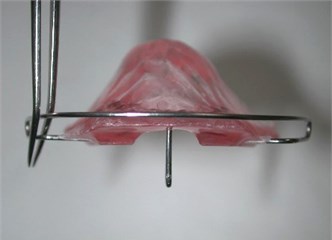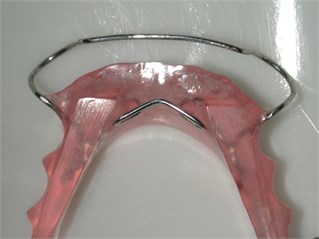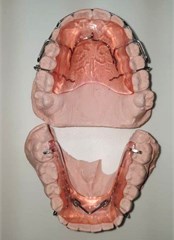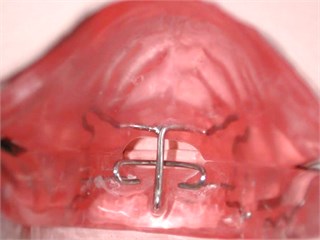Abstract
The myth of Chronos that devours his children is the allegorical expression of time that ends everything, but there is another reading: that time exists and allows us to understand the idea of a process, of evolution, both biologically and in any other aspect of life. The structure is the static, current, measurable morphological expression of everything that has a physical manifestation. Movement is the expression of life that is inexorably written on the structure and is responsible for its dynamism and change. We have developed the ability to analyse the structure in a systematic and detailed way, isolating it from time, and therefore depriving it of the movement that animates it, fixing the moment with static photographic images. With direct cephalometric techniques or on radiography we have defined points and reference systems, measured, compared, made proportions, and described the layout. Like the Art, the Morphological Sciences evolve from a two-dimensional vision to a three-dimensional one and we have given importance to empty spaces. But unlike art, we have difficulty internalizing and becoming aware of movement and the vital energy that animates it. Studying Movement means studying Form along Time. Structure and Function are two sides of the same coin, and our field is a clear example of this. We cannot work on occlusion without understanding the functions associated with the whole system: breathing, swallowing, chewing, are the main sources of stimuli responsible for the development of the Stomatognathic System, which has the movement as its main engine. In our clinical practice we are convinced that seeking an integration between Form and Function provides balance and health to the system and therefore delays the negative effects of Time, and coherently understanding the Form-Function-Time triad provides a broader understanding of development and balance of our system.
1. Introduction
The first references to the structural analysis of the Stomatognathic System (SS) come from the field of clinical anthropology, which provided valuable data collected from the measurements of dry skulls reported on the phylogenetic and ontogenetic development of the system, and indirectly, on the functions involved. The use of these information has allowed the Jaw Functional Orthopaedic (JFO) to develop bio-typological classifications for a better diagnosis and prognosis of developmental disorders [1]. In the middle of the last century, with the contributions of Pedro Planas, movement begins to be incorporated as a fundamental factor in the equation that determines the balance of the SS. Planas makes some basic additions within the functionalist field, prioritizing chewing among all functions due to the intensity of the stimuli that from occlusal rubbing and from mandibular movements afferent to the central nervous system (CNS). In the world of dentistry, the importance of function began to be considered as a source of essential stimuli for a balanced development, which can be translated into stable treatments over time [2]. Movement is the nature of the Stomatognathic System, the language to express its biological purpose, which is, simplifying, to break and shred food to prepare it for digestion. Time is the factor that allows the expression of movement that, through function, will manifest itself in remodelling structure. It is the great ignored in Dentistry, or perhaps, in the vision of the world that we have built. Only by reconsidering time we can understand the concept of “maturation of the occlusal plane” that has the purpose of bringing the stomatognathic system to its functional fullness and equilibrium [3].
2. Structure
The phenotypic expression of an individual is the set of its structural and functional characteristics, which are the result of the interaction between genetic information and environmental factors [4]. The term structure derives from the Latin verb struere: “to dispose, to place”. It is used in biology to indicate organized and interdependent load-bearing elements that constitute the static, current, measurable morphological expression of all that is material, with a solid physical manifestation. Within the cranio-facial system it is represented above all by the hard tissues of bone and teeth and has the task of supporting and distributing the load, of preserving a certain volume. The skull is a mosaic of individual components, each of which enlarges during growth in the proper amount and direction to attain and maintain the stability of the whole. Among the regions of the skull, the cranial base (basicranium) has been recognized as the relatively most stable anatomical region during growth and appears to be strongly genetically determined and subject to minimal environmental influence. On the other hand, growth of the cranial vault (neurocranium) and facial complex (splanchnocranium) appears to be subject to minimal genetic determination but strongly influenced by local environmental factors [5]. Some cranial architectural features have preferred links with specific occlusions. The amplitude and the quality of basicranial flexure due to the remodelling of the sphenoid and occipital bone has correlation with different morphological bio-type and facial equilibrium [6].
2.1. Measure the structure
We have developed the ability to analyse the structure in a systematic and detailed way, isolating it from time, and therefore depriving it of the movement that animates it, fixing the moment with static photographic and radiographic images. With direct cephalometric techniques or indirect on radiography we have defined points and reference systems, measured dimensions and distances, compared, made proportions, and described the layout [7]. The morphological bio-typology is represented by specific Indices expressed in (%), obtained from the proportion of direct linear measurements (mm), these consider the maximum horizontality and verticality on the frontal plane, verticality and depth on the sagittal plane. In addition, indirect angular measurements (degree) of the anterior and posterior profile, the goniac angle of the mandible, the inclination of the bi-spinal plane, the anterior and posterior cranial fossae with respect to Frankfurt Plane (PFH) are used [8-10].
The real challenge is to know how to correlate the structure with the type and quality of the functions that shaped it.
Table 1Morphological bio-typology parameters in JFO
Parameters | Author | Specimen | Type of measurement | Unit | Plane view |
Total facial index | Kollman J. | Dry skull | Direct | mm | Frontal |
Facial index | Martin | Human | Direct | mm | Frontal |
Cranial index | Garson V. | Dry skull | Direct | mm | Orizontal |
Cephalic index | Blumenbech | Human | Direct | mm | Orizontal |
Sub-orbital Facial Index | Bimler H. P. | Cephalogram | Indirect | mm | Sagittal |
Anterior profile angle | Bimler H. P. | Cephalogram | Indirect | degree | Sagittal |
Total basal angle | Bimler H. P. | Cephalogram | Indirect | degree | Sagittal |
Superior basal angle | Bimler H. P. | Cephalogram | Indirect | degree | Sagittal |
Inferior basal angle | Bimler H. P. | Cephalogram | Indirect | degree | Sagittal |
Mandibular goniac angle | Bimler H. P. | Cephalogram | Indirect | degree | Sagittal |
Factor 4 | Bimler H. P. | Cephalogram | Indirect | degree | Sagittal |
Factor 5 | Bimler H. P. | Cephalogram | Indirect | degree | Sagittal |
Factor 7 | Bimler H. P. | Cephalogram | Indirect | degree | Sagittal |
3. Movement
In physics, motion is the change in position of a body in function of time, measured by a specific observer in a given frame of reference. Therefore: a body is in motion when, with the passage of time, its distances vary from any group of objects taken as a reference. Until the 19th century, Newton’s laws were the basis of that part of classical mechanics known as kinematics. The study of motion starting from the causes that generate it or the forces is known as dynamics. Movement of the body is a voluntary or involuntary action performed to accomplish a purpose. Each movement is produced by the muscles which, by means of the contraction mechanism of their fibers, make it possible to move the body. The apparatus in charge of this task is the musculoskeletal system, characterized by the cross functional alternation of the upper limbs with respect to the lower ones. Similarly, to perform its functions in a balanced way, the stomatognathic system requires mandibular movements that follow an alternating pattern, this alternation is essential for maintaining the health of the system.
3.1. Measure the movement
To make a correct diagnosis of the chewing organ, in addition to a static evaluation, it is necessary to add the evaluation of the mandibular dynamics. And it is in this context that the exploration of Planas Chewing Functional Angles (AFMP) takes on significance, so called because they were born from his clinical intuition. Planas was the first to clinically evaluate mandibular movements quickly and easily. We recall that a physiological mandibular dynamic is characterized by the alternation of unilateral chewing, to obtain an ideally symmetrical function, with a prevalence of the translational components over the rotating ones, i.e. horizontality over verticality.
3.2. AFMP and its characteristics
AFMPs are the expression of mandibular lateral movements in the frontal plane. They are explored by asking the patient to bring the mandible into a canine head-to-head relationship alternately from either side. They are performed with open lips and their direction is centrifugal, that is, from the inside to the outside. For these reasons they are considered analysis movements, to distinguish them from true functional movements that are performed with closed lips, in a centripetal direction with the presence of food and ending the cycle in the position of maximum intercuspation. The left and right AFMPs are evaluated against a horizontal line passing through the incisal edge of the maxillary central incisors. Symmetry and amplitude are analysed: equal and flattened angles imply lateral mandibular excursions with horizontal prevalence and therefore facilitated lateral movements (Fig. 1) [12], while steep equal angles are indicative of the prevalence of the vertical component which clinically translates into a vitiated chewing with straight movements in opening and closing. When the angles are asymmetrical, the vertical dimension in dynamics on one side and on the other are different, that is an expression of an underlying functional asymmetry. In this case, chewing will be facilitated on the minor AFMP side [11].
3.3. Three-dimensional evaluation
A three-dimensional conception of the system implies analysing the movements in the 3 planes of space: on the frontal plane the transverse and vertical dimension, it is the plane on which we value the AFMP; on the sagittal plane the vertical and anteroposterior dimensions; and on the horizontal one, the most difficult to appreciate in our daily clinic, we value the lateral extension of the movement and its anteroposterior component. To illustrate the usefulness of considering this plane in daily clinical practice, we show the use of Planas Indirect Tracks with Gothic Arch which were devised by Planas to rehabilitate the latero-protrusive component in mandibular laterality movements [12]. Changing the opening of the angle, rendering it wider, we allow the contact and rubbing between the incisors during the movement of laterality and therefore the recruitment of more propioceptive information for a better control.
Fig. 1PIPS with gothic arch




4. Time
4.1. Maturation of the occlusal plane
This concept, also developed by Planas, is a real paradigm shift. It adds to the meaning of system that of “evolutionary process”. It proposes to us a system open to the influences of the environment and in constant change, like the subject to which it belongs. How far we are from the standard image of dental arches that present us a mouth in a static way, fixed over time, immutable, to which we are usually used. In the human species there are two dentitions, both with the purpose of leading the system to its functional fullness. This process is expressed thanks to a powerful masticatory function that transforms initially punctiform dental contacts into ever larger contact surfaces. The abrasion process, which under healthy conditions is physiological, favours the activation of a greater number of periodontal receptors afferent to the CNS, thus a greater amount of information processed and a recruitment of more muscle fibers that improve movement control and system protection. It is the movement through function that coordinates all the elements of the system, and this is only possible thanks to time [13]. The Process of Maturation of the occlusal plane is equivalent in both dentitions: in the deciduous one it foresees that the occlusal plane becomes plane, horizontal and parallel to Camper’s plane; in the permanent dentition, a progressive reduction of the cusps is clinically evidenced until reaching a helical plane which is associated with an AMFP almost equal to 0° and a freer and wider mandibular movement, which recruits the greatest number of periodontal receptors. In both situations, this plane has a meaning of greater stability and transfers information that comes directly from the anatomy of the TMJ. Practically in this last stage of maturation, the occlusal plane is a direct expression of the joint function. This degree of maturation is exceptionally reached in our environment as we are not exposed to intense functional requirements.
The bio-typological consideration is interesting in this aspect, mesodermal individuals have an advantage over ectodermal and endodermal ones due to the increased muscle strength they are capable of developing [14]. This allows them progressively wider (horizontal) and short (vertical) chewing cycles, more and more efficient.
4.2. Importance of environmental factors
Since the ontogenetic process of the upper jaw and especially of the mandible has a reasonable duration over time and is influenced for a longer period by environmental factors, Planas highlights the role of correct chewing as a powerful function, as a stimulus for robust and healthy growth, and with a protective action in higher risk biotypes. A biotype that is not well predisposed but functionally solicited in a balanced way can still have a harmonious development. This can be of great help in choosing the objectives of a Therapeutic Rehabilitation that is expressed through Function. Nowadays, most of the problems of the SS are related to a weak function that does not allow true physiological chewing and harmonious growth, clinically evidenced by underdeveloped structure, collapsed arches, dental crowding, and with a pathological dynamics, vertical or unilateral prevalent chewing, sometimes associated to TMJ disorders [15]. Mandibular movements must be alternate and free. The clinician's task is to free movement by removing obstacles and giving to the system the possibility to manifest its potential for a self-correction in order to achieve an Intrinsic Order of the elements of the system through a healthy function.
Movement, function, are present in all our patients, as they are endowed with vital energy, how much time do we spend analysing it? How do we concretize our evaluation of movement in the treatment we propose?
References
-
H. P. Bimler, Die kephalometrische Analyse. (in German), Bimler Labor KG, 1968, pp. 1–73.
-
P. M. Planas, “Comme Eviter La Recidive,” (in French), Ortodontie Francaise, Vol. 57, pp. 629–642, 1986.
-
P. M. Planas, “Equilibre et Rehabilitation neuro-occlusale",” (in French), Ortodontie Francaise, Vol. 63, pp. 435–441, 1992.
-
M. J. Deshayes, “Craniofacial morphogenesis,” Revue D’orthopedie Dento-Faciale, Vol. 32, pp. 299–310, 1998.
-
G. Sperber, S. Sperber, and G. Guttmann, Craniofacial embryogenetics and development. PMPH USA, 2010.
-
M.-J. Deshayes and J. Deshayes, “Étude des relations entre la morphologie cranio-faciale et l’occlusion en denture temporaire : remodelages occipitaux et singularités basicrâniennes déterminantes pour l’occlusion,” (in French), L’Orthodontie Française, Vol. 84, No. 1, pp. 97–111, Mar. 2013, https://doi.org/10.1051/orthodfr/2013036
-
P. J. Rigaud and R. Perrot, “Petite incursion dans l’historique d’une reference incontournable de l’anthropologie anatomique modern: le plan de Francfort,” (in French), Paleobios, Vol. 21, 2020.
-
F. C. M. Franco, T. M. Araujo, C. J. Vogel, and C. C. A. Quintão, “Brachycephalic, dolichocephalic and mesocephalic: is it appropriate to describe the face using skull patterns?,” Dental Press Journal of Orthodontics, Vol. 18, No. 3, pp. 159–163, Jun. 2013, https://doi.org/10.1590/s2176-94512013000300025
-
H. P. Bimler, “Sobre una formula de estructura general para la constitucion de la cara del hombre,” (in Spanish), Actas SEDO, pp. 81–100, 1961.
-
H. P. Bimler, “Die physiologischen und pathologischen Varianten des Unterkiefers in Form. Lage und Größe,” (in German), Fortschr Kieferorthop, Vol. 46, No. 6, pp. 261–278, 1985.
-
P. M. Planas, “L’Angle Functionnel Masticatoire (A.F.M.) de Planas,” (in French), ORTHO DOC France, Vol. 51, pp. 1–12, 1980.
-
P. M. Planas, “Apres l’Equi-Plan l’Arc Gothique Planas,” (in French), Ortho Doc France, Vol. 34, pp. 1–12, 1963.
-
S. Dettori and A. Confaloni, Evoluzione Del Rapporto Dinamico Funzionale Tra Occlusione Ed Atm. Sorso, 2001.
-
Martini M., Essai de Biotypologie Humaine. Paris: J. Peyronnt & Cie, 1948.
-
U. Santana-Mora et al., “Asymmetry of dental or joint anatomy or impaired chewing function contribute to chronic temporomandibular joint disorders,” Annals of Anatomy – Anatomischer Anzeiger, Vol. 238, p. 151793, Nov. 2021, https://doi.org/10.1016/j.aanat.2021.151793
About this article
The authors have not disclosed any funding.
The datasets generated during and/or analyzed during the current study are available from the corresponding author on reasonable request.
The authors declare that they have no conflict of interest.
